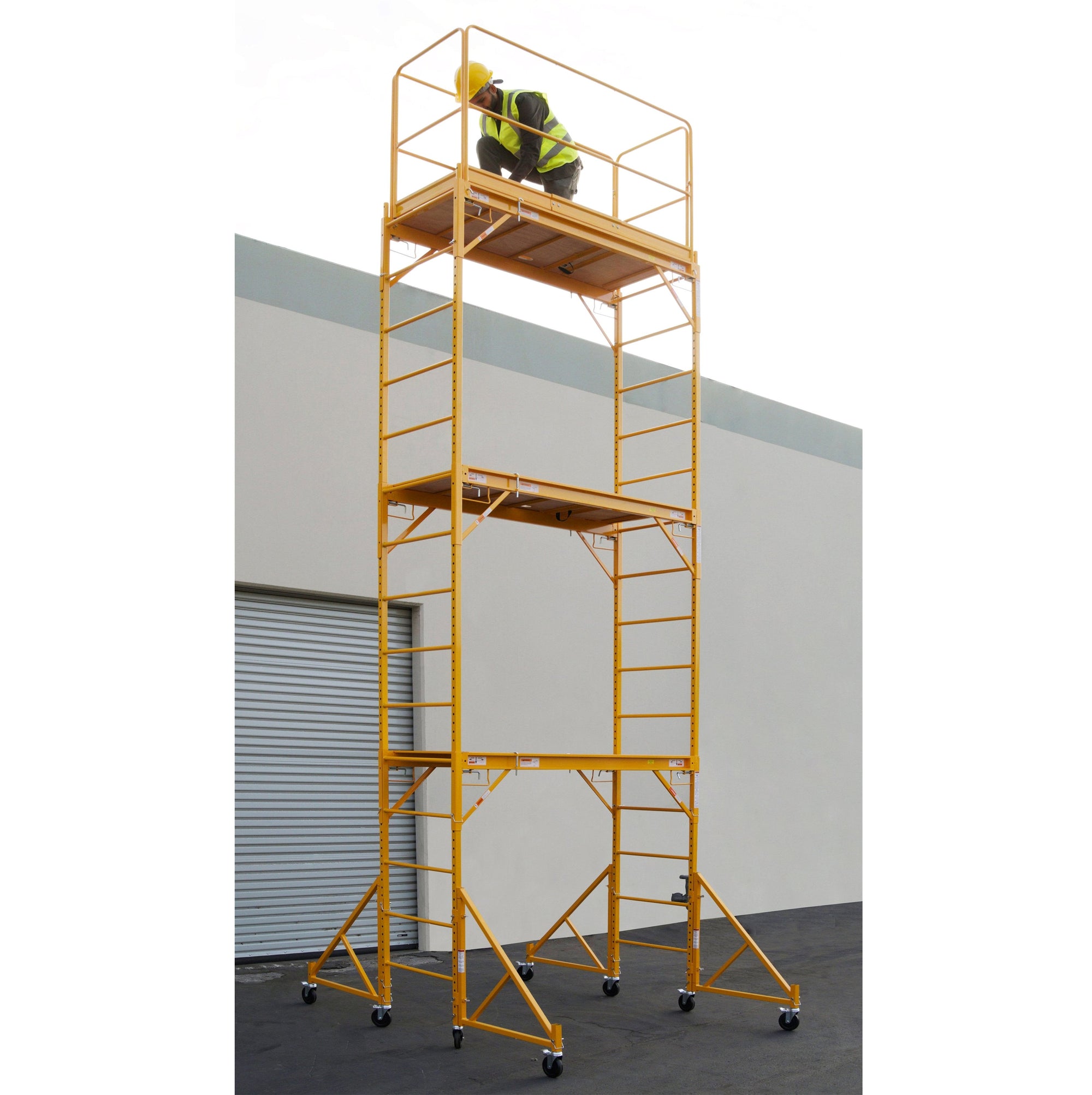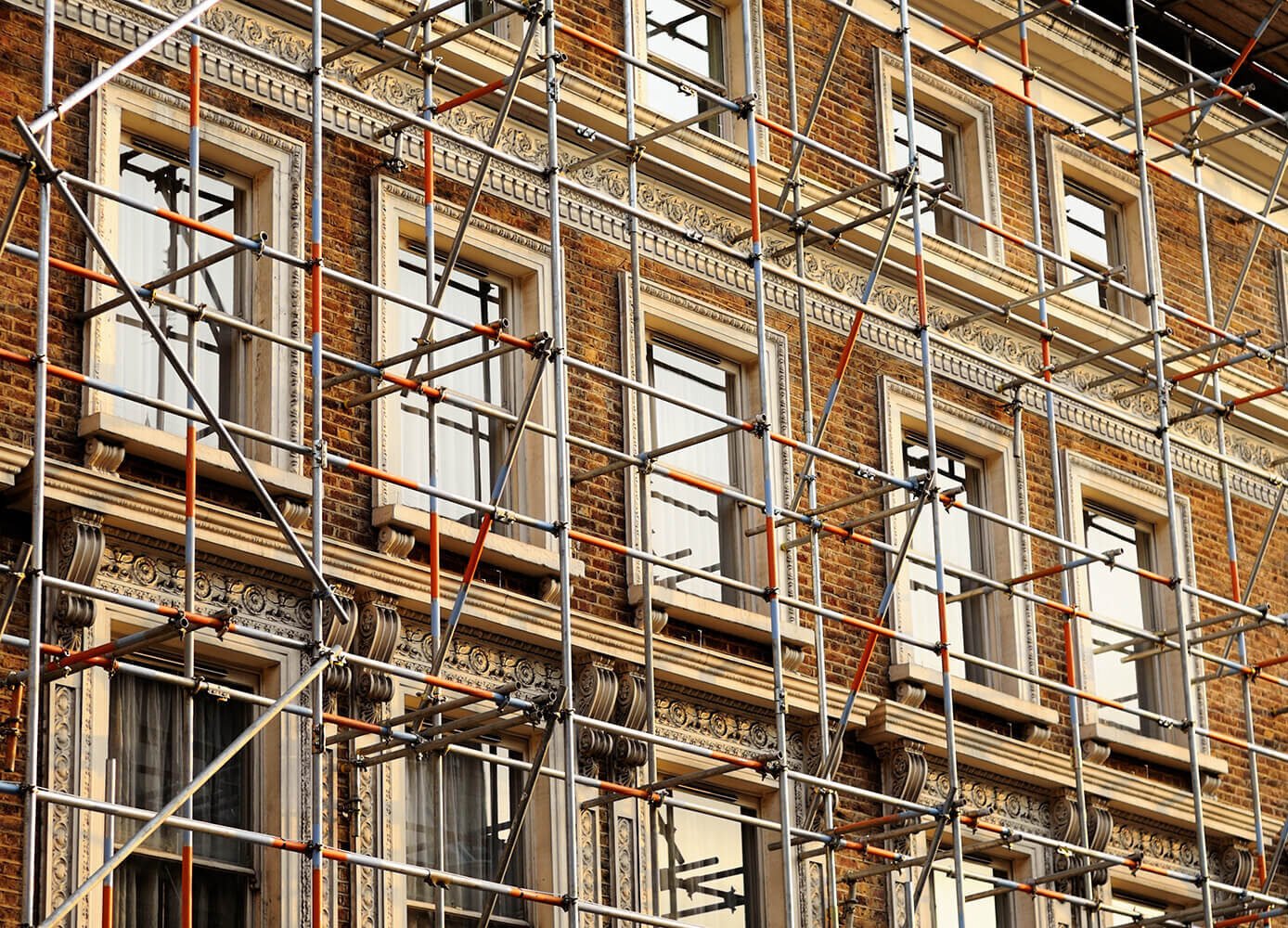Residential Scaffolding Solutions for Safe and Efficient Home Improvements
Residential Scaffolding Solutions for Safe and Efficient Home Improvements
Blog Article
Checking Out the Numerous Types of Scaffolding Utilized in Construction Tasks
The building industry depends greatly on various types of scaffolding to satisfy certain job needs, each offering distinct benefits and applications. Typical framework scaffolding supplies a durable structure for general tasks, while suspended scaffolding is important for work with skyscraper structures. Other options, such as system and rolling scaffolding, cater to efficiency and mobility, specifically. Furthermore, the cantilever alternative shows indispensable in urban environments where area is constrained. Comprehending the subtleties of these scaffolding types is crucial for maximizing security and performance on building and construction sites, prompting a closer exam of their special characteristics and applications.

Standard Framework Scaffolding
Conventional frame scaffolding is among one of the most extensively used techniques in the construction industry due to its effectiveness and convenience. This system contains horizontal and upright frameworks that are constructed to create a steady system for employees and products. The primary parts include upright messages, horizontal ledgers, and diagonal braces, which with each other give a strong framework that can support significant loads.
Among the crucial benefits of typical structure scaffolding is its flexibility to various construction tasks, ranging from residential buildings to huge industrial structures. The modular style enables easy assembly and disassembly, making it efficient for both temporary and lasting jobs. Additionally, the system can be customized in height and width, suiting different building styles and website problems.
Safety is paramount in scaffolding applications, and typical frame systems are equipped with guardrails and toe boards to stop drops and ensure worker defense. Furthermore, normal examinations and adherence to safety regulations are essential in keeping the integrity of the scaffold. In general, conventional structure scaffolding remains an essential selection in the building and construction sector, giving a trusted platform for labor and enhancing total project performance

Suspended Scaffolding
Suspended scaffolding supplies an unique remedy for building tasks that require access to raised surface areas, especially in circumstances where traditional framework scaffolding might be not practical. This kind of scaffolding is usually suspended from the roof or top degrees of a framework, using a system of ropes, pulley-blocks, and systems to produce a functioning area that can be gotten used to different heights.
One of the main advantages of put on hold scaffolding is its adaptability. It can be quickly repositioned or reduced to suit modifications in building needs, making it ideal for jobs such as home window setup, façade job, and upkeep on high-rise structures. Furthermore, the marginal impact of suspended scaffolding allows for much better usage of ground area in city settings, where area is commonly minimal.
Safety is a critical factor to consider in using suspended scaffolding. Appropriate rigging and securing systems must be utilized to make sure security and prevent crashes. Operators has to also be educated in the secure use of this tools. Overall, suspended scaffolding provides a reliable and effective option for accessing hard-to-reach locations in various building and construction scenarios, boosting both efficiency and safety on site.
System Scaffolding
System scaffolding, commonly considered a modern remedy in the scaffolding industry, includes pre-engineered components that can be rapidly constructed and adjusted for different building and construction jobs. Scaffolding. This sort of scaffolding is characterized by its modular style, which permits versatility and efficiency on job sites, suiting structural requirements and different elevations
Normally made from high-strength steel or aluminum, system scaffolding offers enhanced toughness and security. The parts consist of upright blog posts, straight ledgers, and diagonal braces, which interconnect safely, ensuring a click reference robust framework. The layout often integrates standardized fittings, simplifying setting up and disassembly procedures, therefore lowering labor time and prices.

Rolling Scaffolding
Moving scaffolding is a functional alternative to typical fixed scaffolding, developed for wheelchair and simplicity of usage on building and construction websites. This sort of scaffolding contains a system supported by structures with wheels, permitting employees to conveniently transfer it as required. The mobility function significantly improves productivity, as it lessens downtime connected with dismantling and assembling taken care of scaffolding.
Commonly built from light-weight materials such as aluminum or steel, rolling scaffolding supplies a strong yet portable service for tasks calling for constant repositioning - Scaffolding. It is particularly advantageous in tasks such as painting, drywall installation, and electrical job, where accessibility to different elevations and locations is required
Safety is paramount in rolling scaffolding design, with features such as locking wheels to avoid unplanned motion when in use, and guardrails to shield workers from falls. Furthermore, lots of designs are flexible in height, accommodating different project requirements.
Cantilever Scaffolding

The design of cantilever scaffolding usually entails utilizing brackets or arms secured to a structure or structure, making it possible for the platform to extend external safely. Safety and security is vital; hence, these scaffolds must be engineered to withstand ecological problems and different loads. Normal examination and maintenance are necessary to guarantee look these up architectural integrity and worker safety and security.
Cantilever scaffolding is favored for its flexibility and reliable use room, making it a popular option in city atmospheres where room restraints prevail. It promotes simpler accessibility to high elevations, inevitably adding to the total effectiveness of building jobs. Similar to all scaffolding types, appropriate training and adherence to safety and security standards are essential for employees making use of cantilever scaffolding.
Verdict
Standard structure scaffolding gives stability, while suspended scaffolding uses versatility for raised jobs. System scaffolding promotes fast setting up, and rolling scaffolding enhances movement for varying job environments.
Traditional framework scaffolding offers a tough structure for general tasks, while put on hold scaffolding is vital for work on high-rise frameworks.Moving scaffolding is a flexible choice to standard fixed scaffolding, created for flexibility and convenience of use on construction websites. As with all scaffolding kinds, proper training and adherence to security requirements are vital for employees making use of cantilever scaffolding.
Typical structure scaffolding provides stability, while suspended scaffolding offers versatility for raised jobs. System scaffolding assists in quick setting up, and rolling scaffolding enhances mobility for differing job settings.
Report this page